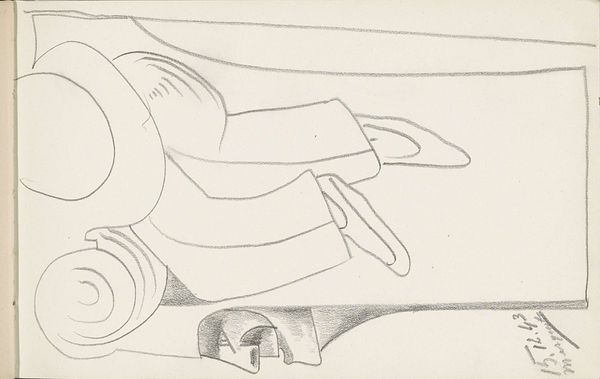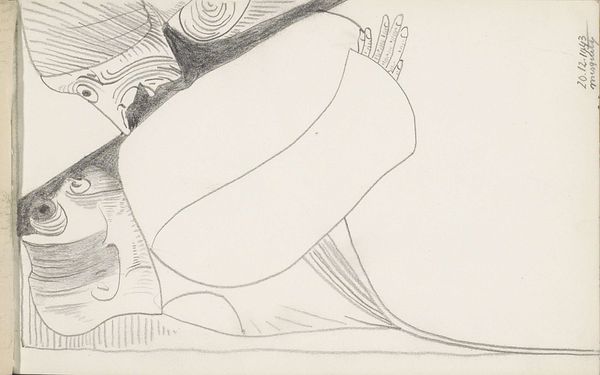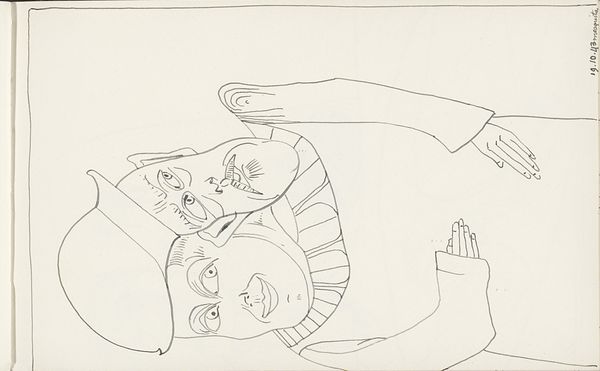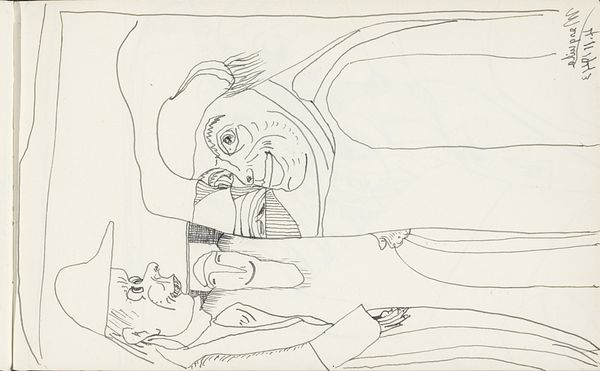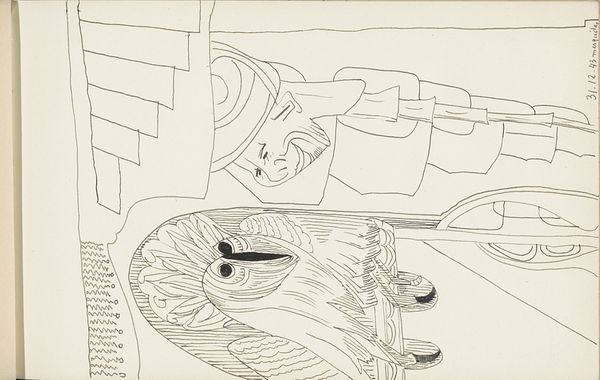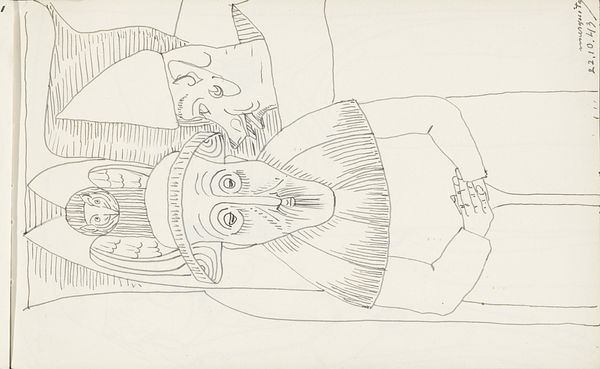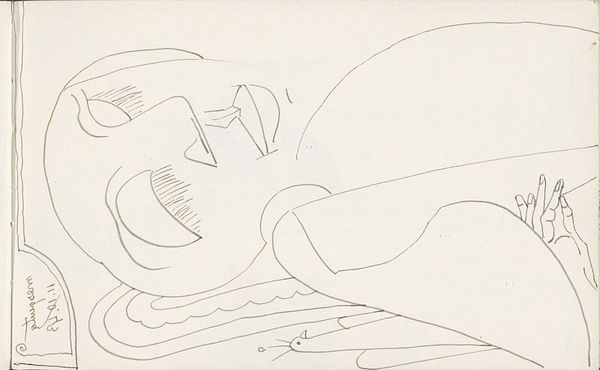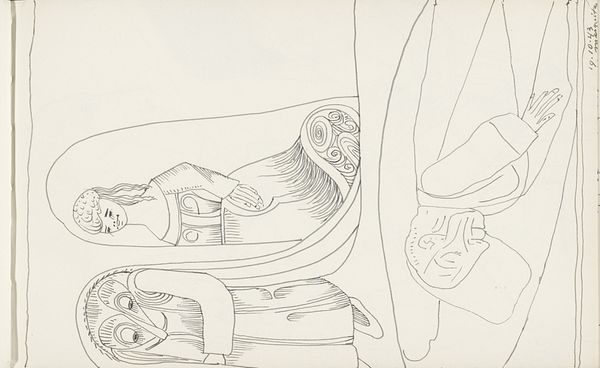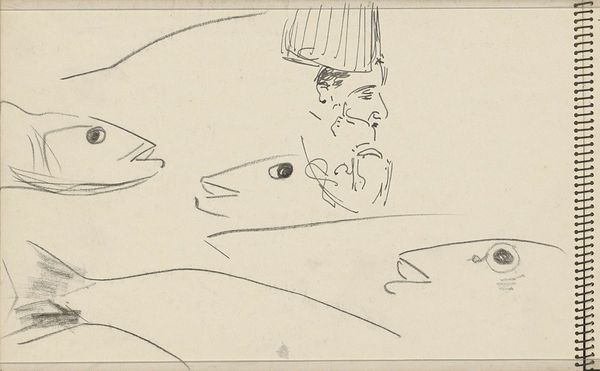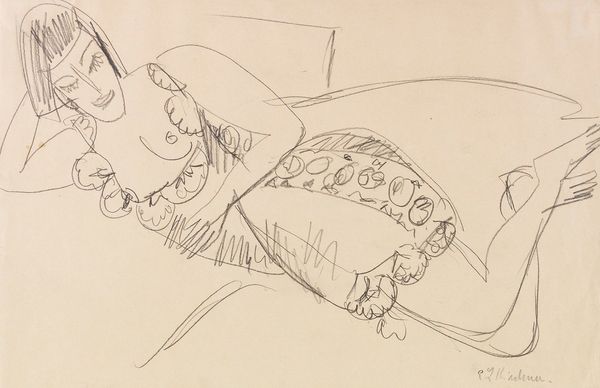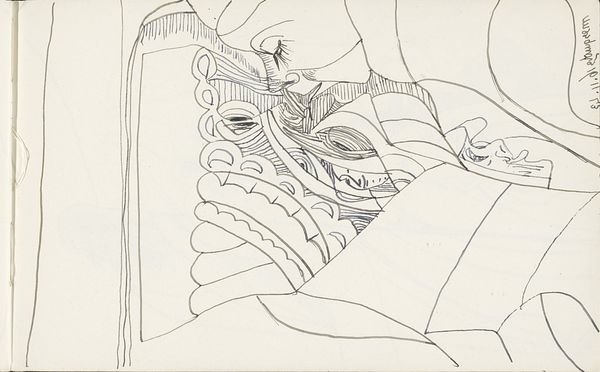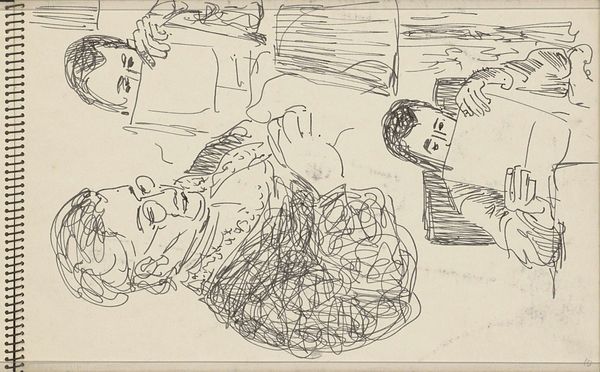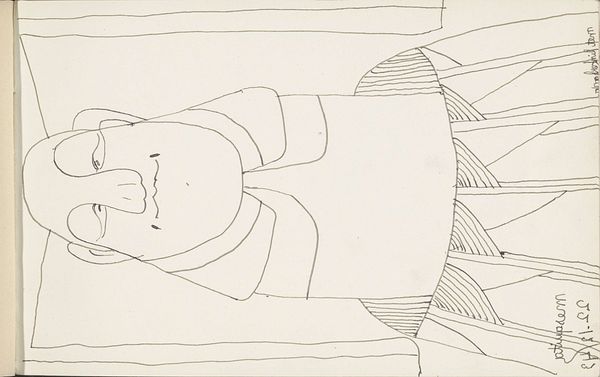
Staande man in profiel naar rechts naast een liggende vrouw Possibly 1943
0:00
0:00
samueljessurundemesquita
Rijksmuseum
drawing, pencil
#
portrait
#
drawing
#
comic strip sketch
#
imaginative character sketch
#
cartoon sketch
#
figuration
#
personal sketchbook
#
idea generation sketch
#
ink drawing experimentation
#
pen-ink sketch
#
pencil
#
sketchbook drawing
#
storyboard and sketchbook work
#
sketchbook art
#
modernism
Copyright: Rijks Museum: Open Domain
Curator: Welcome. We're looking at "Standing Man in Profile to the Right Beside a Lying Woman," a drawing, possibly from 1943, by Samuel Jessurun de Mesquita. Editor: It feels dreamlike. The figures seem disjointed, existing in separate planes almost. Curator: Mesquita's technique here is fascinating. Note the sparse, almost hesitant lines. The overlapping figures and planes create a spatial ambiguity, challenging conventional perspective. It also evokes surrealism, if not outright embracing it. Editor: There’s a palpable tension. The standing man is so stiff, presented beside the vulnerable, reclining woman, and another woman looming overhead. Considering Mesquita was a Jewish artist living in Nazi-occupied Europe, this evokes the fear of constant surveillance and loss of bodily autonomy. He was, in fact, murdered in Auschwitz. Curator: Certainly, the emotional weight is undeniable. However, formally speaking, it is a wonderful example of controlled chaos through line work, it’s the very essence of Modernist fragmentation. I notice, especially, how little attention he provides for their heads. Is it simply because there isn’t enough space? The overall effect is to force our eye from plane to plane, which destabilizes everything and creates movement. Editor: I can't help but view it through the lens of his biography. This could easily read as a comment on power dynamics inherent within patriarchal structures amplified by war, persecution, the constant threat against both mind and body. The ambiguity could itself be a means of coded resistance, representing a world turned upside down. Curator: While your reading undoubtedly adds a layer of meaning, it’s important to remember that even without the historical context, the drawing stands on its own as a compelling study in form and emotional tension. Editor: Perhaps it is both! It speaks to Mesquita’s ingenuity that, with only line and composition, he achieves so much: a technical mastery and a profoundly haunting statement about human suffering and the world in turmoil. Curator: A sobering piece indeed. Thank you for sharing your interpretation.
Comments
No comments
Be the first to comment and join the conversation on the ultimate creative platform.
